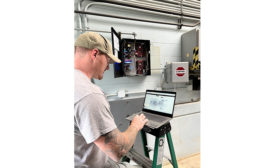Home » Publications » SDM Magazine
SDM Magazine

2023 May
Featured Articles
Back to TopOver the past year, more customers, security manufacturers and integrators have gotten serious about cybersecurity risk within their video surveillance systems and are working with their IT departments to crack down on vulnerabilities.
Read More
SDM EXCLUSIVE
The 2023 SDM 100: Solving the Labyrinth
SDM 100 companies reported a wide variety of experiences in 2022, very much depending on the path, location and unique set of challenges that made up their business conditions last year. As a group, however, they continue to rise to the challenges put before them and find their individual path to success.
May 2, 2023
Columns
Back to TopTech Solutions
Managed Service Provider Upnine Partners With Integrators for Enterprise-Level Service
May 4, 2023
Get our new eMagazine delivered to your inbox every month.
Stay in the know on the latest security marketplace trends.
SUBSCRIBE TODAY!Copyright ©2024. All Rights Reserved BNP Media.
Design, CMS, Hosting & Web Development :: ePublishing

















.jpg?1688648345)